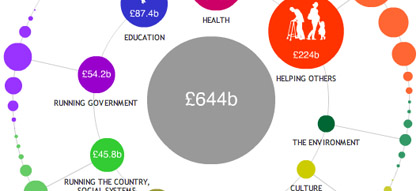The first draft of a handbook to help journalists deal with data has been created this weekend, with plans for it to be published next week.
You can read the table of contents of the Data Journalism Handbook here.
The book was written in 48 hours at the Mozilla Festival in London, with contributions from 55 people, including staff from the BBC, Guardian and New York Times. It has six chapters and 20,000 words and is a response to a challenge set by Mozilla, a nonprofit technology company, to “assemble a utility belt for data-driven journalists”.
The challenge stated:
There’s increasing pressure on journalists to drive news stories and visualisations from data. But where do you start? What skills are needed to do data-driven journalism well? What’s missing from existing tools and documentation? Put together a user-friendly handbook for finding, cleaning, sorting, creating, and visualising data — all in service of powerful stories and reporting.
Jonathan Gray from the Open Knowledge Foundation and Liliana Bounegru, European Journalism Centre hosted sessions at the Mozilla Festival to create the handbook.
A blog post written by Gray lists some of the contributors
- James Ball, Guardian Datablog
- David Banisar, Article 19
- Caelainn Barr, EU Data Journalist
- Paul Bradshaw, City University London
- Nicolas Kayser-Bril, Data Journalist
- Heather Brooke, Journalist and FOI Campaigner
- Lisa Evans, Guardian Datablog
- Rich Gordon, Northwestern University
- Francis Irving, ScraperWiki
- Friedrich Lindenberg, Open Knowledge Foundation
- Cynthia O’Murchu, Financial Times
- Aron Pilhofer, New York Times
- Anthony Reuben, BBC News
- Simon Rogers, Guardian Datablog
- Sascha Venohr, Zeit Online
- Lulu Pinney, Infographic designer
Interested in getting started in data journalism? Kevin Anderson is leading an introduction to data journalism one-day training course for Journalism.co.uk in January 2012.
